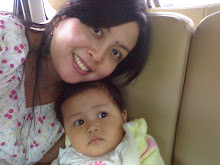| Even if you’ve avoided the head lice epidemic so far, read on… one of these days you’ll need to know what to do. If your kid hasn’t had them yet, don’t feel too smug. Nits are everywhere and it’s probably only a matter of time before your child catches them. There’s no need to feel any shame. Sue Grant, who works as the health promoting schools facilitator at Kids First in The first step in combating head lice, says Grant, is proper diagnosis. Don’t treat your child with head lice products “just in case”. “They are chemicals for goodness sake. They contain insecticides. And if you treat unnecessarily you could be breeding resistance,” she says. Finding eggs, which can look like a tiny string of pearls at the base of the hair follicle, is not evidence enough. Don’t treat your child unless you find active lice, which are the size of small ants. Head lice can lay up to six eggs a night and the eggs will hatch within seven to 10 days, so once you’ve decided on a treatment you need to follow instructions to the letter to break the reproduction cycle. If one louse survives, it will lay eggs and you’ll be back to square one. Don’t worry about washing linen or cleaning carpets, says Grant. “They can’t live long off the scalp, so it’s a misconception that they can be transmitted through sharing hats, pillowcases, linen or clothes.” Insecticidal treatments like Permethrin, Malathion and Parasidose are the strong-smelling products that people have traditionally used to combat lice. They kill the lice, but may not kill all the eggs so you usually need to repeat the treatment to kill any lice that hatch later. Don’t use a conditioner or two-in-one shampoo and conditioner before using these treatments as they can hamper their effectiveness. You need to read the instructions carefully, as they all differ and these treatments will only work properly if you use them as directed. There are plant-based, chemical-free products that use herbal extracts and essential oils like tea tree, clove and lavender. These may help to deter lice. The Licetec Robi Comb, about $90, is a battery-operated comb that electronically stuns or kills lice caught between the teeth. Wet Combing – Sue Grant and her public health team swear by this technique: 1. You will need a fine tooth comb (a nit or flea comb) and conditioner. 2. Wet your child’s hair and lightly towel it dry. 3. Apply conditioner and divide his hair into sections. 4. With the fine tooth comb, start at the scalp and pull the comb through each section of the hair. This process needs to be repeated every three or four days for three weeks to break the cycle. |
NIT KNOW HOW
Labels: little treasures, mom and baby info
Subscribe to:
Post Comments (Atom)

No comments:
Post a Comment